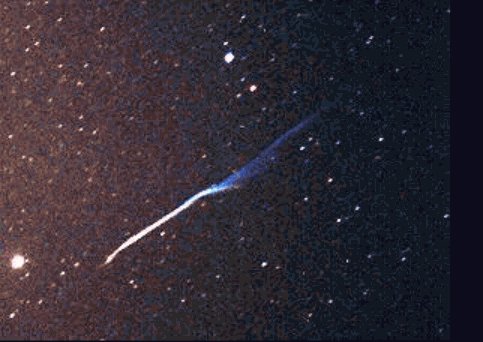Meteor Storm Sights and Sounds
Credit & Copyright:
Paulo Raymundo
(Reaiche
Observatory)
This dramatic four-frame animation shows a fireball meteor and its
developing persistent "smoke" train, recorded two weeks ago in
skies near
Salvador, Brazil.
Indeed similar sights are astonishingly familiar world-wide to
witnesses of this November's fireball-rich
Leonid meteor storm.
A few skygazers even discovered
that some bright Leonid fireballs made faint, gentle,
hissing sounds(!), a surprising effect only recently
appreciated and understood.
Accounts of fireball
meteors making noise have long been
viewed
with skepticism, particularly because sounds were
reportedly heard just as the meteor was seen overhead.
But light travels much faster than sound so, like delayed
thunder from
a distant lightning stroke, a
meteor produced sound should only
be heard long after the
meteor streak was seen.
A
sound explanation supported by
laboratory
tests is that turbulent
plasma created by the meteor's passage
generates very low frequency radio waves.
Traveling
at light speed the radio waves reach the ground
simultaneously with visible light where they are strong enough to induce
oscillating currents
and
audible vibrations in common objects
like grass, leaves,
wire-frame glasses, and perhaps even dry, frizzy hair.





